

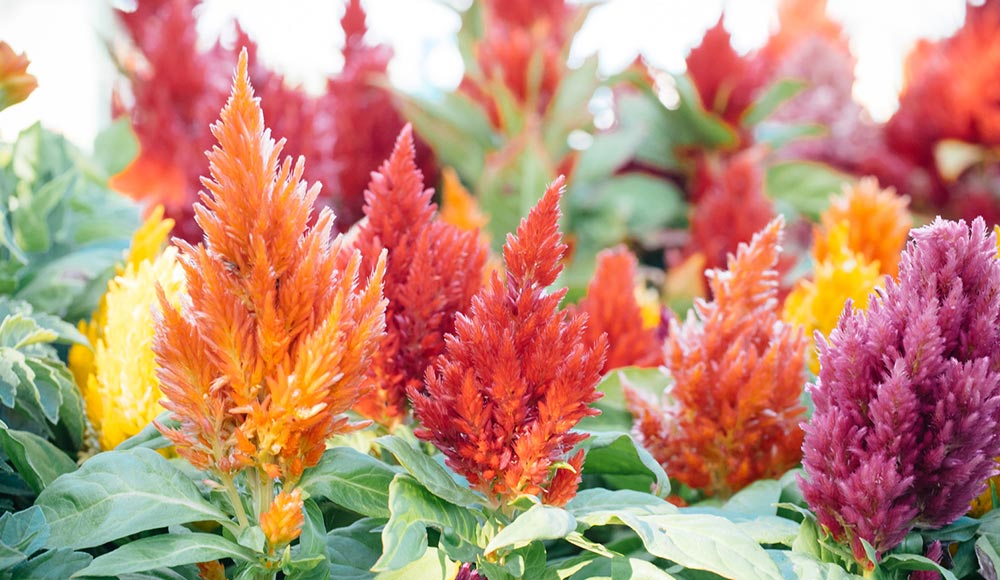
By Linda Ly
Summer often takes the cake for having the showiest, boldest, and brightest blooms, but fall’s no slouch either. After laying low all season, these late-blooming flowers will surprise you with their dazzling array of jewel tones. Plan for them early in the season (especially if you’re starting from seeds) for one final hurrah in the garden before the first frost hits.
Fall-blooming perennials typically get very leggy as they focus all their energy into growing tall and strong all summer. As soon as their flowers open, they often become top-heavy and flop over. To keep this from happening, stake them early, plant them along a wall, or surrounded by shorter plants for support.
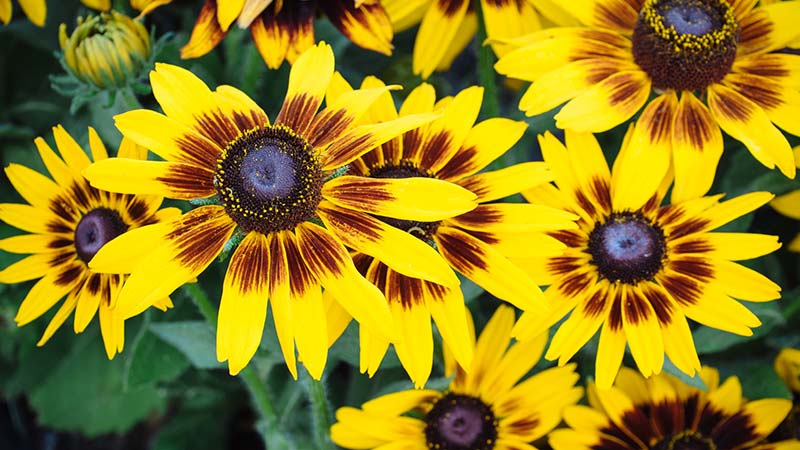
A classic flower, Rudbeckia has gold or orange petals with dark centers. One variety, Rudbeckia maxima, also known as great coneflower, can reach up to 8 feet tall. These plants start blooming in mid-summer. However, if cut back after the last flowers drop, they will bloom again in late autumn.
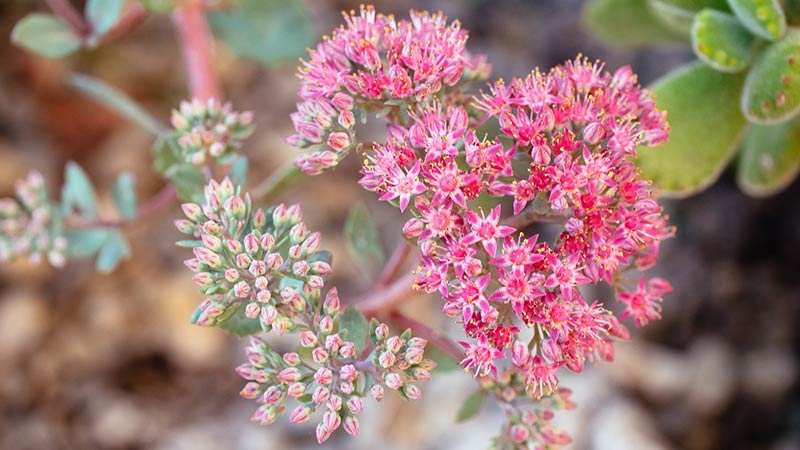
This stonecrop stands out from typical fall bloomers with its thick, succulent leaves. The clusters of reddish-pink flowers bloom prolifically in fall and attract bees, butterflies, and other pollinators to the garden.
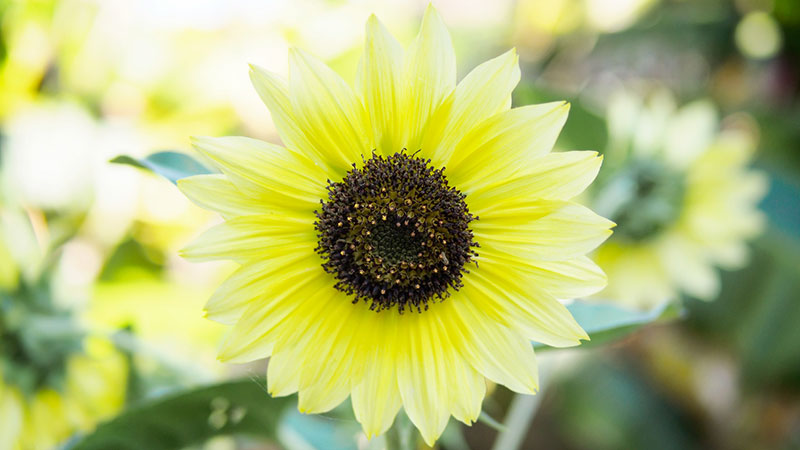
Gardeners tend to be more familiar with the super tall and showy annuals bearing plate-sized flowers, but perennial sunflower varieties are worth growing, too. They bloom toward the end of the season in late summer to early fall with multiple (though more modestly-sized) flowers.
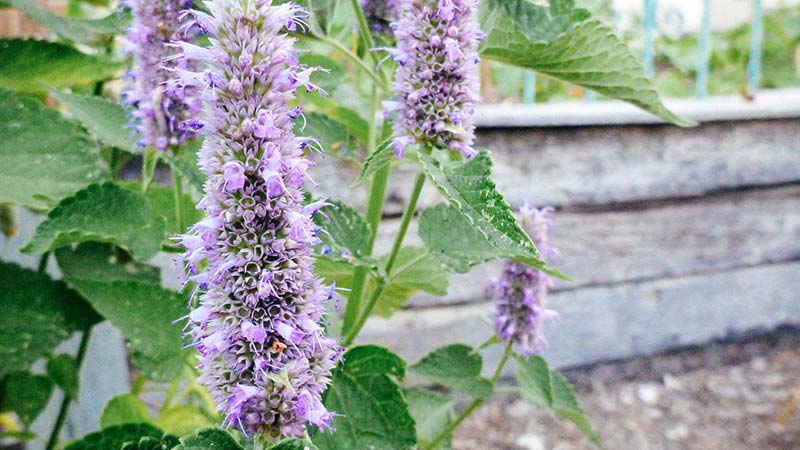
This fragrant herb smells like licorice and sends up tall spikes of lavender flowers in fall. It’s a beneficial plant to grow throughout a garden, especially an edible garden, since pollinators are attracted to its blooms.
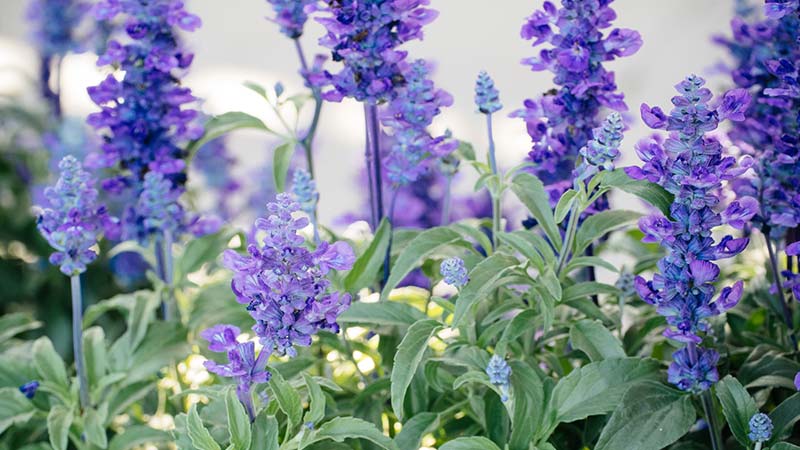
There are many types of salvia, such as Victoria Blue Salvia, Russian Sage, Mexican Sage, and Pineapple Sage. All of them bloom profusely from mid-summer through late fall. Most people know them for their velvety blue and purple flowers, but salvias also bloom in lavender, red, and white.
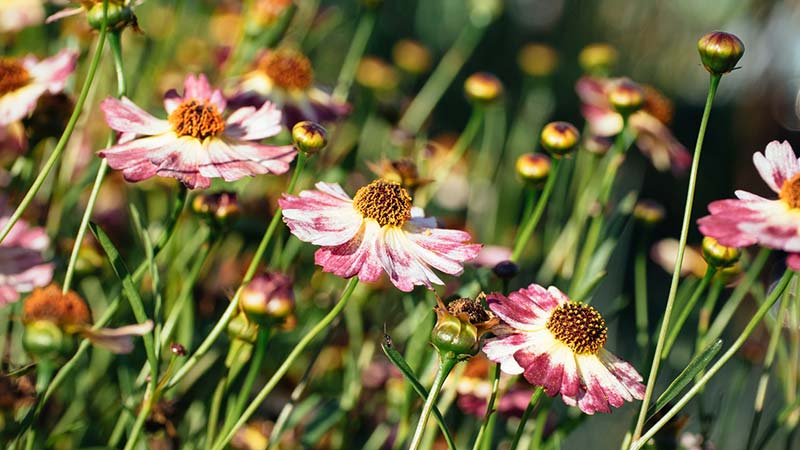
Also known as tickseed, this easy-to-grow, low-maintenance plant starts flowering from early summer until the first frost. The daisy-like flowers are deer-resistant and have a long bloom period, making them excellent for cuttings all season long.
If you’re looking to add some annuals to the mix, try these fabulous fall bloomers for your garden beds, hanging baskets, or window boxes. They thrive in cooler temperatures and in frost-free areas. Some plants will even continue blooming until the following spring.

Of all the flowers on this list, Mums are the flag bearers of fall, bursting into bloom right when the nights start to get longer and cooler. Though Mums are actually perennials, they’re often grown as annuals. By the time mums are brought home from the nursery, they’re already in bloom and their roots don’t become established enough to make it through the rest of the year. Enjoy their flowers from late summer to heavy frost, sometimes even as late as November. (Note: Be sure to plant Garden Mums or Hardy Mums, not the Florist Mums that come potted in the grocery store.)
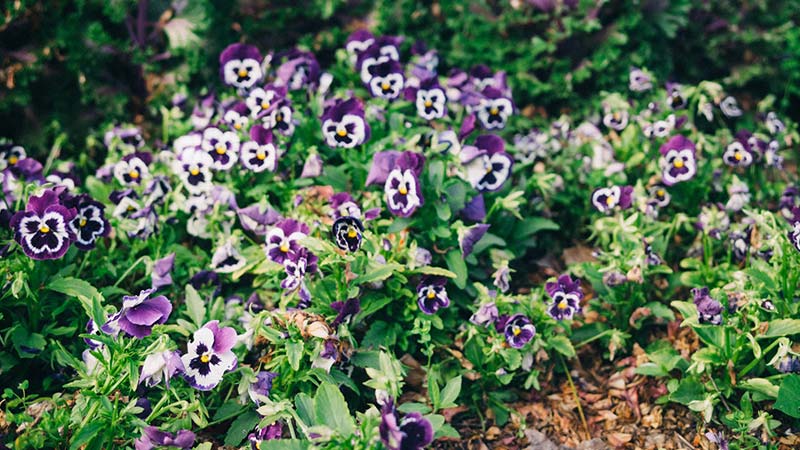
This resilient bedding plant (and its cousin, the Pansy) is known for its love of cold weather, even blooming in the dead of winter when nothing else will. Some varieties, such as ice pansies, can actually survive a dusting of snow! For the best blooms, wait until the weather cools down before you plant them.
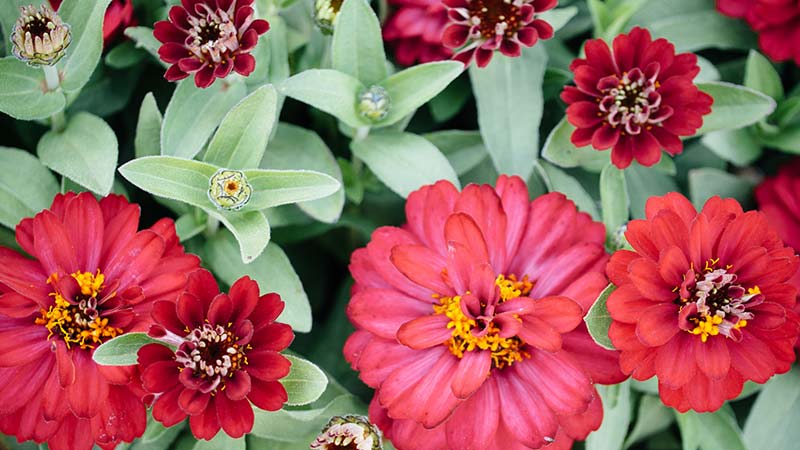
If started from seed, fast-growing Zinnias reach blooming age in just six to eight weeks and flower in abundance from summer to frost. They come in an array of bold and pastel colors, bi-color, and tri-color, as well as single petals, semi-doubles, and doubles, making them an all-around great addition to a cut flower garden.
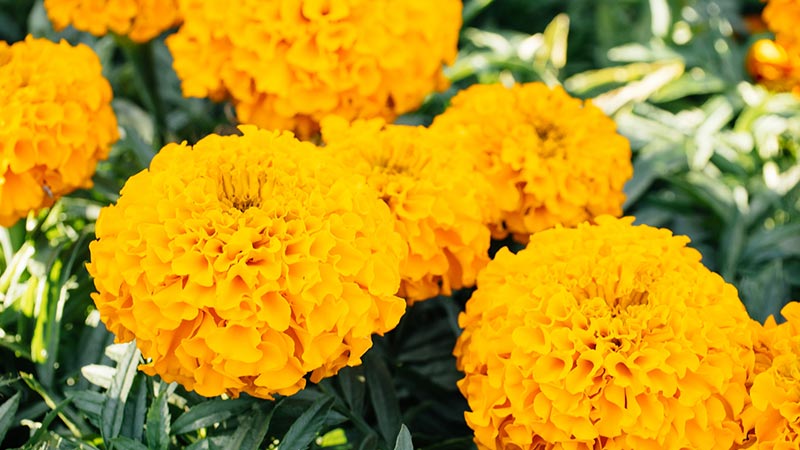
The cheerful pompom-like flowers of African Marigolds are the biggest and flashiest of all the marigold varieties. With regular deadheading, they bloom all summer and well into fall until the first frost. The more delicate French Marigolds and Signet Marigolds are also good choices for classic fall color.
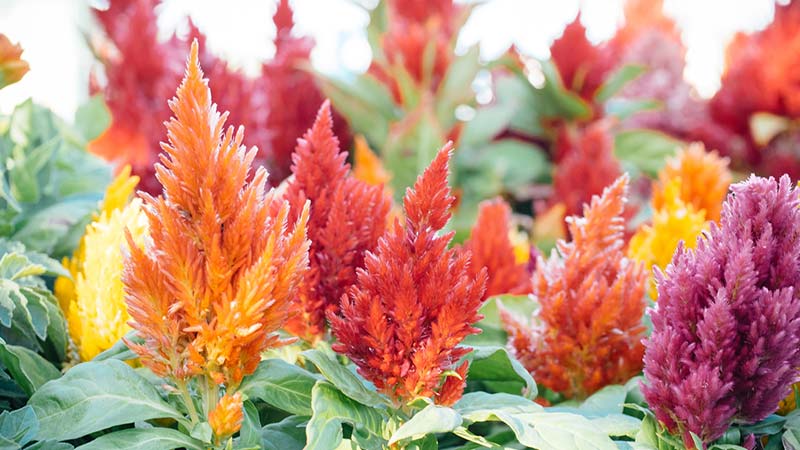
If the striking spikes of feather-like flowers seem reminiscent of amaranth, that’s because the plants belong to the same family. Despite its exotic looks, celosia is an easy-care plant that blooms from mid-summer to mid-autumn. It’s extremely drought-tolerant and ideal for beginner gardeners or water-wise gardens.
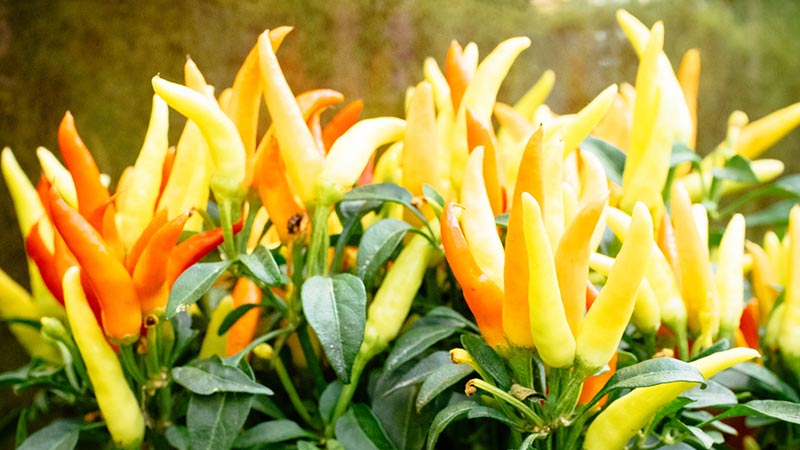
Sure, pepper plants flower from summer to fall, but what you’re really after are the brightly colored peppers that appear once the flowers fade. While not technically a “fall flower” like the other options on this list, ornamental peppers are worth growing in your garden just for the wow factor. They differ from edible peppers in that their fruits grow upright (instead of drooping down), and they often come in an attractive array of foliage colors. You can eat the peppers from an ornamental pepper plant, but they’re usually too hot – or otherwise lacking in flavor – for the average consumer.
Unless you find flowers at a nursery that are already blooming, fall flowers generally need to be seeded in spring or transplanted by early summer to give you enough time to enjoy them. Most varieties start blooming in mid-summer and continue until frost. Giving them plenty of time to establish roots while the soil is still warm will ensure they put out a good show of blossoms during the change of seasons.
| Early to mid-spring after the last frost date | Divide perennials and plant divisions before they bloom and before summer heat sets in |
| Summer | Plant heat-tolerant annual and perennial flowers
Direct sow annual flower seeds |
| Early fall | Plant cold-tolerant annual and perennial flowers |
Fall can be a tricky time to maintain a flower garden. Some days see record-setting heat, while nights can drop to 40°F without warning. It’s important to keep a close eye on your plants during the transitional period from summer to fall, when the weather is unpredictable day to day.
New plantings and annual flowers (both of which have shallow root systems) will need more frequent watering. Perennials that have been in the ground all year can go longer periods without irrigation, especially if your area is prone to summer monsoons or autumn rainstorms.
In general, you’ll want to keep the first 2 to 3 inches of soil moist with a watering nozzle while the plants are actively growing and blooming. Once they become dormant or the heavy flowering period has passed, cooler and wetter weather has usually set in and you can reduce the amount of water you use in the garden.
From the moment you pick it up, you’ll notice these nozzles are different. Designed with mobility in mind, they feature Gilmour’s innovative Swivel Connect. The swivel allows the nozzles to pivot without
Learn MoreWinter Gardening Tips to Tackle in the Off Season
As winter marches on, avid gardeners become more and more eager to get growing. While you may not be able to dig your spade into the soil just yet, there is plenty
Learn MoreDesign a Beautiful Drought Resistant Yard
Hot weather and drought-like conditions don’t mean a beautiful yard and garden is out of reach. Learn everything you need to know about drought tolerant landscaping, including the best type of plants,
Get the Dirt